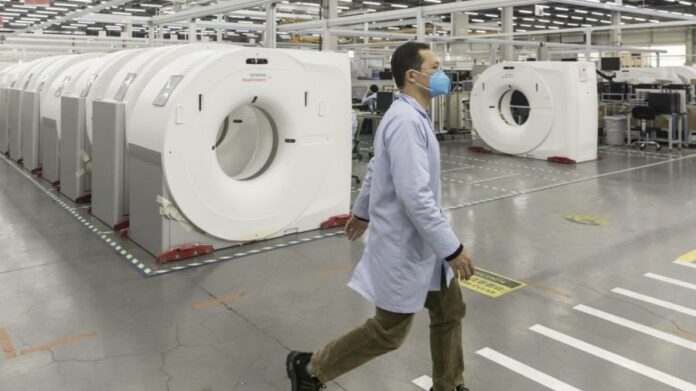Siemens is scouting for investments in south-east Asia to diversify away from China, as multinationals work to reduce supply chain risks against a backdrop of geopolitical tension between the west and Beijing.
The German group, one of the world’s biggest industrial conglomerates, is taking on staff and considering adding factories in fast-growing economies including Indonesia, Vietnam and Thailand, said Judith Wiese, Siemens’ chief people and sustainability officer, in an interview.
“It is a very varied region, but one that has a lot of potential and with the world talking very much about the US and China from a diversification perspective, it is very interesting for us,” Wiese, also a member of Siemens’ management board, said in Singapore.
Rising tension between Washington and Beijing has made many multinationals wary of their dependence on China. Supply chains are being hit by US efforts to curb China’s access to cutting-edge technology, adding to shocks caused by the country’s former Covid-19 policy as well as slowing growth.
Wiese said that while China remained Asia’s main manufacturing hub, it was more easily replaced as other places evolved. South-east Asia “has opportunities as a market as well as from a manufacturing perspective”, Wiese said.
Siemens, a bellwether of the global economy that employs more than 311,000 people, has a large office in Singapore but China is its largest market in Asia and the second-largest overseas after the US.
In 2021, 13 per cent of group sales came from China but the country is more important for some divisions, such as Siemens’ industrial automation and digitisation arm, which in the same year made a fifth of revenues there.
In the wake of Russia’s invasion of Ukraine, which has forced Germany to reassess how its economy could have become so reliant on Russia, the country’s industrial giants have also come under increasing pressure to review their dependence on China.
Philip Buller, analyst at Berenberg, said Siemens “cannot ignore geopolitics and since Russia invaded Ukraine, every government on the planet has started rethinking political ties, not just with Russia but also China”.
But the driving force behind Siemens’ investment decision, Buller said, would be outlook on demand and growth. “For several decades, China has been the growth engine, but that is now moderating,” he added.
A number of multinationals are reducing exposure to China and building up a supply chain role for other countries, in a “China plus one” production strategy. Sony, Apple, Samsung and Adidas are among businesses that have shifted production from China to south-east Asia, including Vietnam and Thailand.
“European companies have been slower to shift their footprint to south-east Asia, but I think you’re going to see a rush now thanks to the escalating threat of confrontation and conflict between the US and China,” said one Singapore-based lawyer who advises global manufacturing businesses.
India has similarly profited from companies moving or adding production lines out of China. Unlike south-east Asia, where groups must navigate a number of countries with different regulations, India is a single large market and has been touted as having potential to recreate the conditions that made China the world’s manufacturing powerhouse.
Wiese said: “In terms of diversification [in Asia], it is China, India and Asean [the Association of Southeast Asian Nations].”






